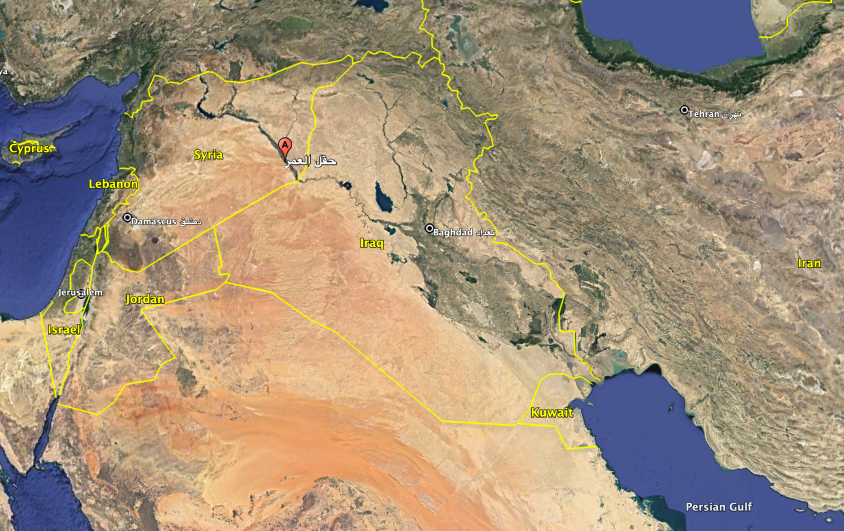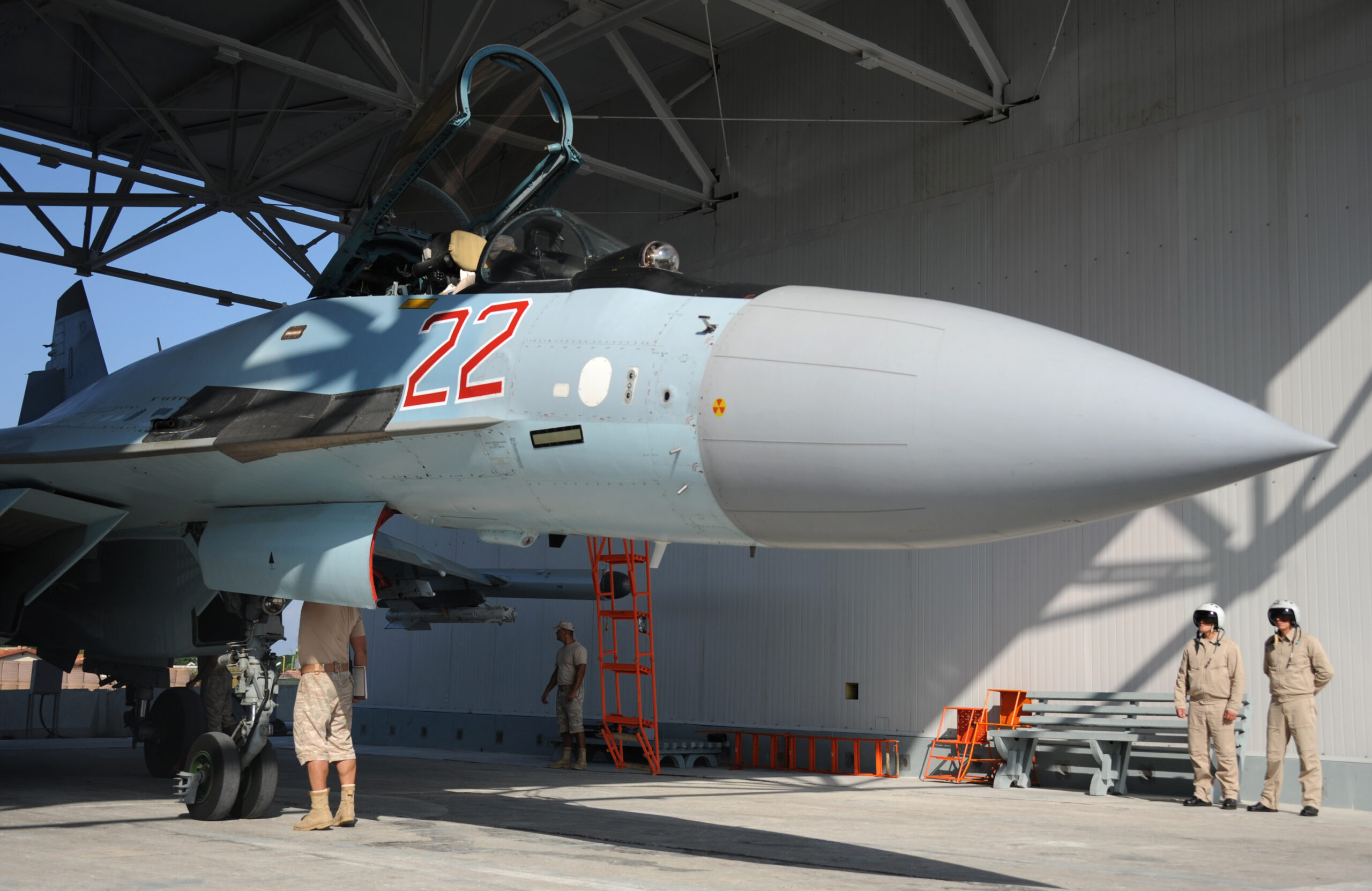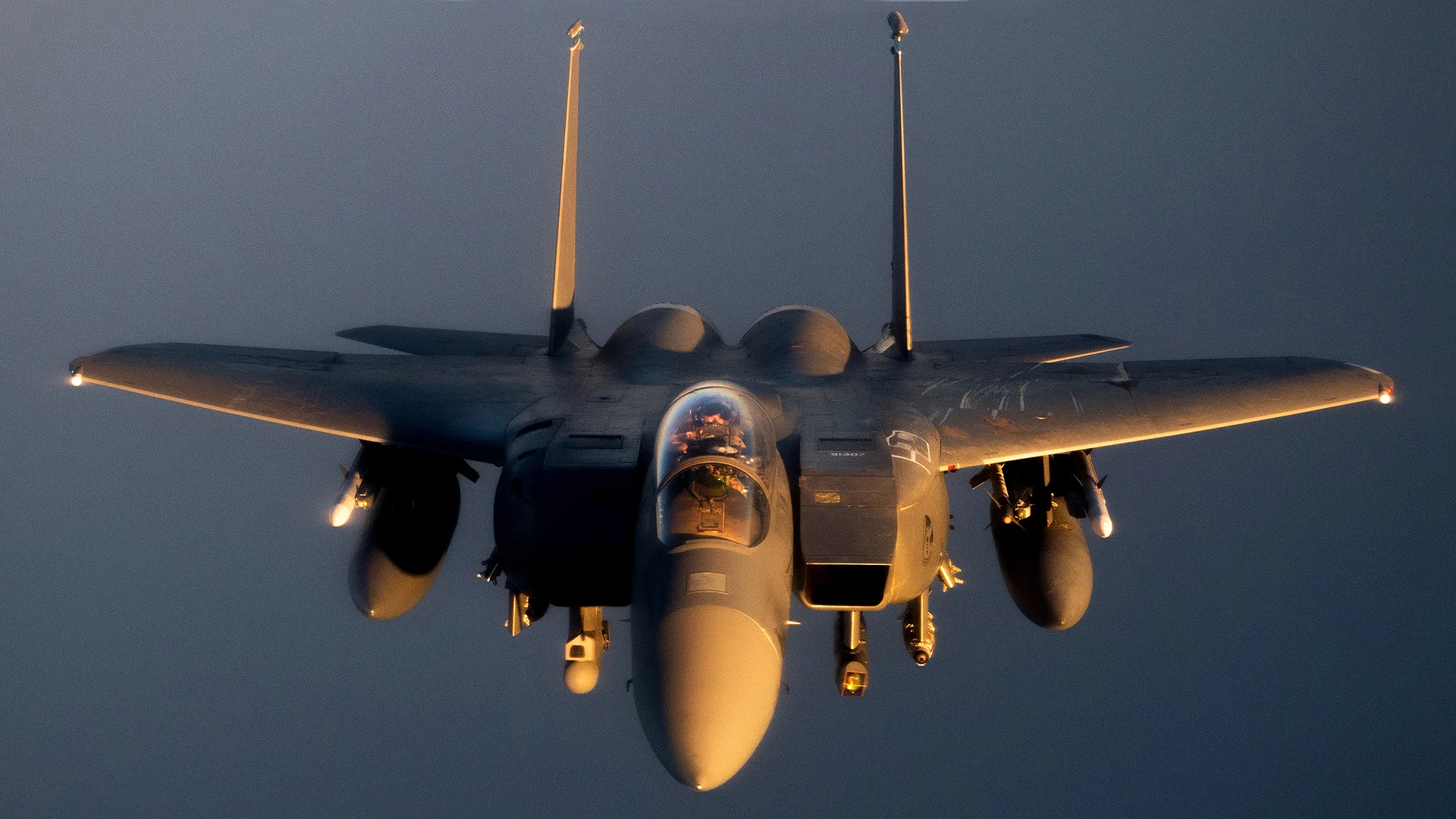Tensions between the U.S. and Iranian-backed militias in Syria have ratcheted up in the past 24 hours.
Iranian-backed militia members fired missiles at a U.S. base in Syria, according to the Syrian Human Rights Observatory (SOHR), an independent and impartial U.K.-based human rights organization. That was an apparent response to a strike by two U.S. Air Force F-15E multirole fighters on facilities used by groups affiliated with Iran’s Islamic Revolutionary Guards Corps (IRGC) Thursday. That strike was in retaliation for a deadly drone strike on a U.S. facility by what intelligence officials say was an Iranian-made one-way ‘kamikaze’ drone.
“Iranian-backed militiamen stationed in a base near Ain Ali shrine in Al-Mayadeen countryside fired several missiles today morning, targeting positions in Al-Omar oil field which hosts the International Coalition’s largest base in Syria,” according to SOHR. “Meanwhile, SOHR activists have reported seeing fighter jets hovering over the region this morning. “

“We can confirm there was a rocket attack on Green Village in Syria,” Maj. John Moore, a CENTCOM spokesman, told The War Zone. “There were no casualties.”
The F-15E reprisal strikes were conducted following the death of a U.S. contractor and the wounding of five U.S. service members and another U.S. contractor. The casualties occurred as a result of an unmanned aerial vehicle attack on a maintenance facility at a U.S.-led anti-Islamic State coalition base near Hasakah in northeast Syria at approximately 1:38 P.M. local time Thursday, according to a Pentagon media release.
Two of the wounded service members were treated on site, while three additional service members and the U.S. contractor were medically evacuated to coalition medical facilities in Iraq.
The intelligence community assessed that the UAV was “of Iranian origin.”
It is unclear whether the drone that killed the contractor and wounded the troops and the other contractor was the first deadly strike on U.S. personnel by a kamikaze drone. We have reached out to the Pentagon and will update this story with any answers provided.
Acting at the direction of U.S. President Joe Biden, Defense Secretary Lloyd Austin said the “airstrikes were conducted in response to [Thursday’s] attack as well as a series of recent attacks against Coalition forces in Syria by groups affiliated with the IRGC.”
Mike Lawhorn, a CENTCOM spokesman, told The War Zone that since Jan. 1, 2021, Iranian-backed groups conducted 78 attacks against U.S. troops and facilities in Syria, including four this year.
U.S. officials have yet to release any assessment of the damages caused by the strikes. However, SOHR said the airstrikes “left eight Iranian-backed militiamen dead: six in the warehouse in Harabesh and two in the position on the outskirts of Al-Mayadeen.”
The number of fatalities is expected to rise, SOHR said, as the strikes left several militiamen injured, some seriously, amid unconfirmed reports of more fatalities. The strikes also caused heavy material losses.
“After the attacks, Iranian-backed militias in Al-Mayadeen, Al-Bokamal and Deir Ezzor cities amassed their troops and were put on high alert, in preparation for new attacks,” according to SOHR.
Iranian drones, which have been used to devastating effects by Russians in Ukraine, are a growing threat in the Middle East as well, U.S. Central Command leader, Army Gen. Michael “Erik” Kurilla testified Thursday before the House Armed Services Committee.
“The Iranian regime now holds the largest and most capable unmanned aerial vehicle force in the region,” he said, according to NBC.
The threat of drones to troops in the region and beyond is something The War Zone has highlighted for many years and is now becoming a primary concern of commanders. You can read more about this troubling reality here.
“These precision strikes are intended to protect and defend U.S. personnel,” the Pentagon said in a media release Thursday evening. “The United States took proportionate and deliberate action intended to limit the risk of escalation and minimize casualties.”
“As President Biden has made clear, we will take all necessary measures to defend our people and will always respond at a time and place of our choosing,” Austin said. “No group will strike our troops with impunity.”
“Our thoughts are with the family and colleagues of the contractor who was killed and with those who were wounded in the attack earlier today,” Austin said.
The Russians have also been creating problems for the U.S. in Syria.
Armed Russian jets have flown over a U.S. military garrison there nearly every day in March, violating a 4-year-old agreement between the U.S. and Russia and risking escalation, according to NBC News, citing its recent interview with the U.S. general in charge of air operations in the region.
“Lt. Gen. Alexus Grynkewich, combined forces air component commander for U.S. Central Command, told NBC News on Wednesday that the most recent Russian overflight of At Tanf Garrison (ATG) happened just a few hours earlier, and that Russian jets have violated the airspace roughly 25 times so far this month, compared to zero times in February and 14 in January.”

“It is a substantial increase,” he told NBC News, explaining that at this rate they are “on track to be double what it has been in the past.”
“They’re regularly flying directly overhead of our units, and I’ve defined directly overhead, as within about a mile, no more than a mile offset one side or the other, while we’ve got forces right there on the ground at ATG,” said Grynkewich. “So it’s an uncomfortable situation.”
The use of the Strike Eagles to carry out the retaliatory attack shows once again the airframe’s versatility and comes as the U.S. Air Force is looking to cut the already relatively small size of that fleet by around 54 percent before the end of the decade. This comes despite the service’s F-15Es being some of, if not its most in-demand tactical jets thanks to their highly-desirable blend of speed, range, payload capacity, crew size, and other capabilities.

American F-15Es have held watch over Syria nearly continuously for years now, even after the larger counter-ISIS operation has waned. They often respond rapidly to emergency situations like hostile aircraft and troops approaching U.S. outposts. In fact, F-15Es made a historic kill against an Iranian drone threatening just such a base in 2017. Supporting targeted strikes and major counter-terror missions have also been part of their role as a forward deployed force to the region.
This is a developing story.
Stay with The War Zone for updates.
Update: 3:14 P.M. EST
Air Force Brig. Gen. Pat Ryder, the Pentagon’s top spokesman, held a media briefing Friday afternoon and offered several comments about the ongoing situation in Syria:
- In response to the deadly Iranian-made drone attack, the U.S. conducted F-15E strikes on two IRGC-affiliated facilities near Deir Ezzor in eastern Syria at approximately 7:40 P.M. Eastern Time, or 2:40 A.M. local time. The U.S. is assessing the outcome of the strikes. Initial indications are that the facilities were destroyed. The U.S. is still assessing whether any militants were killed in the strikes.
- Other than saying its radar was working, Ryder declined to comment about whether the air defense system at the U.S. base that was hit by the Iranian-made drone was working. The New York Times on Friday – citing “two U.S. officials” – reported that the “main air defense system at a coalition military base in northeast Syria was not fully operational” when the suspected Iranian drone attacked. “It was unclear why the system was not fully operational and what difference that made in defending the base,” the newspaper reported. “For operational security reasons, I’m not going to get into the specifics in terms of the types of force protection capabilities we have in our facilities other than to say we take force protection very, very seriously,” Ryder told reporters Friday. “As it pertains to radar, my understanding is that there was a complete sight picture in terms of radar.” CENTCOM, he said, will investigate.
- Ryder acknowledged that the rocket attack on the U.S. base at Green Village in Syria was in response to the F-15E strikes, but downplayed the issue of escalation in the region with Iran. “At approximately 8:05 A.M. local time, which would have been 1:05 A.M. Eastern Time, we had 10 rockets that targeted coalition forces at Green Village in northeast Syria. The attack resulted in no injuries to U.S. or coalition personnel and no damage to equipment or facilities. In terms of escalation, our focus in Syria is on the defeat ISIS mission. And that will remain our focus. We do not seek conflict with Iran. We don’t seek escalation with Iran. But the strikes that we took last night are intended to send a very clear message that we will take the protection of our personnel seriously and it will respond quickly and decisively if they’re threatened.”
- Iran has a responsibility to keep its proxies from firing on the U.S. and allies, Ryder said. “Look, we know that these groups are sponsored by Iran. So Iran certainly plays a role in terms of ensuring that this type of activity doesn’t happen. Iran certainly again backs these groups and by default, therefore has a responsibility to ensure that they’re not contributing to insecure instability, but clearly, they continue to do that.”
- Ryder did not know what kind of drone was used in the attack, but said it crashed into the facility as opposed to firing any weapons.
Contact the author: howard@thewarzone.com
